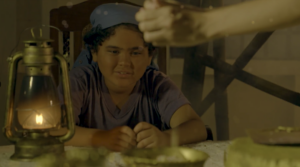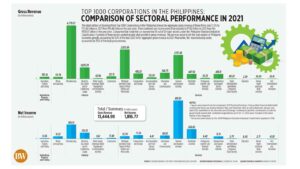Get to know the Cinemalaya 2022 feature films

Aspiring boxers, lost soldiers, and hungry children are just some of the characters in this year’s films
AFTER two years of online film screenings of short feature films, the 2022 edition of the Cinemalaya Independent Film Festival returns with onsite screenings of full-length and short feature films in competition in August.
The festival’s 18th year, which has the theme “Breaking Through the Noise,” will feature 11 full-length films and 12 short features from Aug. 5 to 14 at various venues around the Cultural Center of the Philippines (CCP).
This year’s full-length films were the finalists selected for 2020 and 2021 editions of the film festival.
The 11 full-length films in this year’s film festival are:
• Angkas by Rain Yamson
The story follows two estranged friends rebuilding their relationship while traveling together to retrieve the body of a deceased friend.
• 12 Weeks by Anna Isabelle Matutina
In the film, a 40-year-old woman finds out she is pregnant just a few weeks after ending a romantic relationship.
The film is set in 2017 and includes events from Mindanao such as the Marawi Siege, said the film’s director, Anna Isabelle Matutina, during a press conference on July 6 at the CCP Main Theater.
“It is a story about modern Filipino women who continue to struggle in a highly conservative and deeply patriarchal country where anti-woman laws continue to exist,” Ms. Matutina, who is a director and editor for the documentary series i-Witness, wrote in her director’s notes.
• Bakit ‘Di Mo Sabihin? by Real S. Florido
Real S. Florido’s personal thesis on communication, the film follows a deaf couple whose marriage is failing.
“Lahat tayo kaya natin magsalita… pero naipaparating ba natin doon sa kausap natin ang gusto nating sabihin? (We can all speak… but do we really effectively express what we mean to those we speak to?),” the film’s lead actor, JC De Vera, said of the story’s message.
For the hearing audience, the film includes translations of the Filipino sign language (FSL) as well as gay FSL used in the film.
• Batsoy by Ronald Espinosa Batallones
The film follows two young siblings in a fantastical adventure to satiate their craving for batsoy or batchoy (a noodle soup made with pork offal).
Director Ronald Espinosa Batallones recalled that as a child he and the children in their town craved the local delicacy like they would food from a new fast-food joint.
“The film will highlight the noble and supreme love of the elder child for his younger sibling,” Mr. Batallones wrote in his filmmaker’s notes.
• Blue Room by Ma-an L. Asuncion-Dagńalan
The film follows young rock musicians who are arrested for possession of illegal drugs.
“As a writer, I just want to tell the story of using power in the right way. Don’t abuse it or misuse it,” director Ma-an L. Asuncion-Dagńalan said, adding that in the film, the young characters use their musical talents as their source of power.
• Bula Sa Langit by Sheenly Gener
In the film, Wesley, a soldier who fought in a siege, finds himself faced with a different battle when he comes home.
“Something that you celebrate may be a scar to other people,” director Sheenly Gener said in English and Filipino. “We consider soldiers as heroes, [but] how they shift from being at war to being with their families does not cross our minds.”
“How do they bridge the gap knowing that when you are a soldier, they are weapons of war and not carry much emotion. When they come back to their families, [the problem is] how do they shift [back to] being a family member,” she said.
• Ginhawa by Christian Paolo Lat
Director Christian Paolo Lat is a boxing enthusiast and heard stories from his trainers when he got into amateur boxing. These inspired the film which is about an aspiring boxer who is exposed to the sport’s grim reality while in training.
“Amateur boxers fight it out, blood, sweat and tears, just to have a chance to train in Manila under a boxing stable. They’re promised the world at their fingertips by their managers, but often return to their province with less than what they arrived with,” Mr. Lat wrote in his filmmaker’s notes.
“We take so much pride in our athletes, but we do not see what they had to go through to make it [to the] top,” he said.
• Kaluskos by Roman S. Perez
A psychological thriller about a single mother fighting for custody of her child, “this film reminds us not to belittle women, especially mothers, as they continue to find ways in solving different problems in whatsoever ways that can also from the society we live in,” director Roman S. Perez wrote in his notes.
• Kargo by TM Malones
The film is about a woman who seeks revenge from the man who killed her family.
“Born out of a short film concept confronting a past traumatic experience, Kargo became a feature film about living and redemption. This film is a story of one of countless fellow Filipinos that I would like to tell,” director TM Malones wrote in his filmmaker’s notes.
• Retirada by Milo Alto Paz and Cynthia Cruz-Paz
A film about finding one’s purpose in their twilight years, it follows a retired government employee whose new hobby leads her to desperation and financial problems.
“We usually value youthfulness and doing want we want while we are young,” co-director Milo Alto Paz said in English and Filipino.
• The Baseball Player by Carlo Obispo
The film is about a Moro child soldier who aspires to become a baseball player.
“As in any war, lives are lost, families are broken apart, hope is lost; and dreams, especially those of the children, if they even had the chance to have any, are shattered,” director Carlo Obispo writes in his notes.
SHORT FEATURE FILMSMeanwhile the 12 short feature main competition films are:
Ampangabagat nin Talakba ha Likol (It’s Raining Frogs Outside) by Maria Estela Paiso is about a girl who resists her childhood home’s attempts to destroy her with her own personal history.
Black Rainbow by Zig Dulay (Luzon) follows an Aeta boy who chases his dream of going to school to learn how to read the legal documents given to their community and understand why they are being forced to give up their ancestral lands.
City of Flowers by Xeph Suarez is about a couple’s attempt to survive the devastatingly low yield of their flower farm and raise money for the birth of their first child
Dikit by Gabriela Serrano follows a young woman with a monstrous secret who desperately longs for a different body. The arrival of a new couple next door gives her a chance at it.
Distance by Dexter Paul de Jesus is about a mother and son who have not seen each other for seven years. The reunion forces the pair to tackle their estranged relationship.
Duwa-Duwa by Nena Jana Achacoso is about a runaway daughter who comes home to steal her mother’s prized rooster, only to find out it isn’t worth as much as she thought.
Kwits by Raz de la Torre follows a man who struggles to get by in the time of COVID-19 and fight to get his ayuda (government aid).
Mata Kang Busay (Vision of the Falls) by Nińo B. Maldecir and Cypher John T. Gayorgor is about a father who makes a wish on a waterfall to keep up with the demands of life.
Mga Handum nga Nasulat sa Baras (The Dreams that are Written in the Sand) by Arlie Sweet Sumagaysay and Richard Jeroui Salvadico follows three boys who become teachers to their parents upon the announcement of a new educational system where parents must take an exam to determine whether they are fit to teach their children.
See You, George! by Mark Moneda follows a group of hospital workers commemorating the life of a deceased colleague through a virtual memorial service.
Si Oddie by Maria Kydylee Torato is about a delivery rider struggling to find his untraceable customer while racing against time to also pay for his mother’s medical needs.
Roundtrip to Happiness by Claudia Fernando is an experimental film shot with Google Earth. Amid the pandemic, friends Ara and Hiro visit Google Earth and travel virtually to places such as Quezon, Banaue, and Disneyland. Then their conversation and virtual tour is interrupted by a power outage.
FILM SCREENINGSThe festival will open on Aug. 5 with the screening of the 2022 Sundance Film Festival Jury Prize winner Leonor Will Never Die, written and directed by Martika Ramirez Escobar. Starring Sheila P. Francisco, the film follows a retired screenwriter who falls into a coma and finds herself as the protagonist of her unfinished screenplay. The festival will close with two documentaries: Karl Malakunas’ Delikado, about illegal logging in Palawan, and Stafanos Tai’s We Don’t Dance for Nothing, about the lives of overseas Filipino workers during the protests in Hong Kong.
The competing films will have screenings in partner cinemas nationwide from Aug. 10 to 17. Regional screenings will follow in selected cities on Aug. 22 to 29. The film festival’s online screenings will run from Oct. 17 to 31 via the CCP Vimeo account.
For more details, visit the CCP and Cinemalaya websites and social media pages. — Michelle Anne P. Soliman




